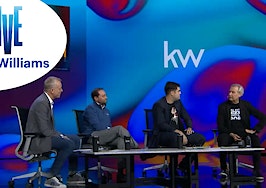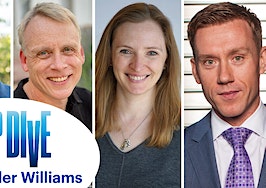
All week, Inman is taking a Deep Dive into Keller Williams. We’re talking to key executives, unpacking its strategic moves and reporting live from the virtual KW Mega Camp, with the goal of telling you everything you need to know about KW right now. Watch for future Inman Deep Dives into top brokerages coming in the months ahead.
When the coronavirus pandemic first swept through North America a year and a half ago, no one was quite sure what was going to happen. Little by little though, it became clear: People were moving, and they were moving a lot. And that was especially true for luxury consumers.
“Luxury is moving around the planet like it’s never moved before,” Brady Sandahl said this week.
Sandahl — the director of growth for Keller Williams Luxury — made the comments during a breakout session of Keller Williams’ Mega Camp, a virtual event held this week. And Sandahl’s point was that luxury real estate has changed thanks to COVID-19.
Those changes have to do with the kinds of properties luxury consumers want, where those consumers are willing to live, how they think about amenities and more. It’s a big topic, but Sandahl’s thesis was that agents need to adapt to a luxury landscape that continues to evolve.
Here are some of the most significant shifts in luxury that have Sandahl noted have happened during the pandemic:
Urban to suburban, suburban to rural
Sandahl began his Mega Camp presentation by explaining that many luxury consumers realized early in the pandemic that they didn’t need to live in dense urban and job centers. The result was that many urban consumers ended up relocating to suburban markets, while those already in the suburbs moved to rural locations.
Many observers have documented this trend, but Sandahl noted in his session that it has produced distinct winners in the market. For example, people aren’t just gravitating to any suburban or rural markets. Instead, they’re going to places that they might previously have only considered for vacations.
“The trick is they weren’t just going to vacation in those markets; they were going to live in those markets,” he explained. “That secondary home market, like Palm Springs, became that co-primary market, where now they were spending half their time.”
This idea of “co-primary” markets was one of Sandahl’s main takeaways, and it offers a way to understand the specific types of markets luxury consumers favor when they’re able to live literally anywhere.
“We saw migration, and we’re still seeing it,” he added. “We’re seeing people go from primary to co-primary. And they’re doing that in those secondary, resort markets.”

Brady Sandahl discussing the luxury market during Keller Williams’ Mega Camp | Credit: Keller Williams
The race for space
Sandahl also said that some states have managed to attract more luxury consumers than others. Part of that has to do with where those secondary and resort markets are located, but he also said that western states where there tends to be more open space have generally excelled over the course of the pandemic.
The reason for this, according to Sandahl, is because luxury real estate consumers are thinking differently today about amenities. Whereas in the past they might have gravitated toward things like country clubs, many now want amenities on their own property. So, rather than a shared pool or gym, they want those things at home.
Western states like Wyoming and Utah tend to have more space for those things, Sandahl noted.
“Those markets are winning,” Sandahl said of the West. “Clients are looking for space and they’re defining luxury not necessarily as the country club they going to but buy the amenities they’re getting.”
Water is winning
Other markets that are currently winning among luxury buyers are those located near water. Superficially, that sounds obvious; wealthy consumers have always gravitated toward places like Malibu or Palm Beach.
But Sandahl said it isn’t just those traditionally ritzy areas that have drawn attention during the pandemic. Instead, luxury buyers are looking at the Gulf Coast, Oregon, Washington and other areas. Hawaii is doing particularly well, and markets that have rivers and lakes are also popular right now among luxury buyers. The unifying principle, then, is water.
“Anything around water,” Sandahl said, “is winning in the new luxury market.”













